-
Car Reviews
- Car News
-
Car Comparisons
Latest comparisons
- Chasing Deals
After months of hype and speculation, the latest iteration of Germany’s original sports sedan is finally here. The 2018 BMW M5 has been revealed, packing much of what we expected – a redeveloped 4.4-litre V8, tied for the first time to BMW’s xDrive all-wheel-drive system – and some of the things we didn’t, like a clean break away from a dual-clutch gearbox in favour of a quick, smooth eight-speed torque converter automatic. Developed at BMW M’s test circuit in Miramas, in the south of France, and refined on the Nürburgring, the M5 is a contemporary evolution of the first M5, the 1984 E28 that pioneered the concept of a supersport executive four-door.
Like its predecessors, the new F90-generation M5 is a fundamentally subtle vehicle outside – especially in a conservative colour, if not the new feature ‘Marina Bay Blue’ hue – but what’s under the bonnet has officially crossed into bonkers territory. Power comes by way of what BMW M are calling a ‘thoroughly overhauled’ development of the outgoing F10 M5’s 4.4-litre twin-turbo V8. The new mill makes all the big numbers: the 441kW of power (or 600 horsepower) is only up 17kW, but 70Nm more torque takes the M5’s total twist to a thunderous 750Nm, all of which is available from just 1,800rpm.
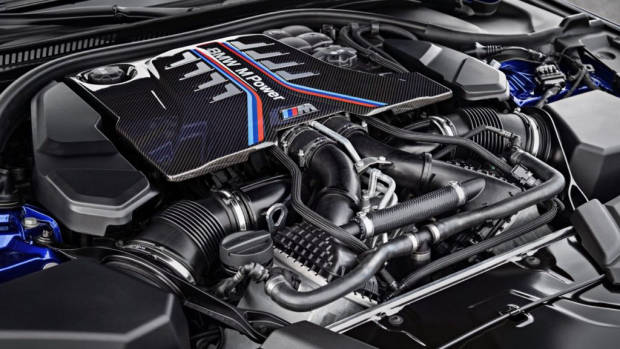
But it’s the tying of the monstrous V8 to a switchable all-wheel-drive setup that makes the new M5 a particularly ferocious contender. Left to its own devices, with power flowing through all four wheels, the F90 M5 can dispatch the 0-100 sprint in just 3.4 seconds – a huge 20% reduction over the old car’s 4.2 second dash, and a figure that places BMW’s executive express firmly in supercar territory. But it only matches the 0-100 time of the Mercedes-AMG E63 S, which also recently adopted an all-wheel-drive configuration.
While that AMG has an accessible ‘drift mode’, the incoming M5 offers stronger driver-facing customisation of its xDrive setup. Starting the BMW’s engine sees the vehicle operate by default in ‘4WD’ mode with dynamic stability control switched on – this mode allows limited rear-end slip. A median ‘4WD Sport’ relaxes the stability control, and raises the threshold for rear-end tyre spin in an effort to allow ‘controlled drifts’. However, the front axle can be entirely disconnected in ‘2WD’ mode, which returns the M5 to an entirely rear-wheel-drive configuration. In rear-drive, stability control and other driving aids can be entirely turned off – M were keen to ensure the M5 would appeal to ‘the experienced and highly adept driver in mind…with no control systems to hold [them] back’.
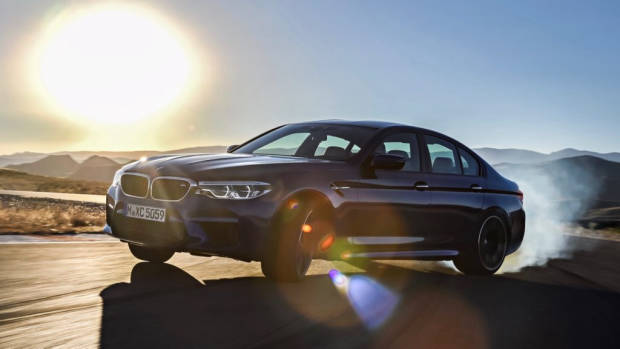
Despite the addition of all-wheel-drive gizmos, the F90 achieves a weight reduction over the preceding F10, thanks to the addition of a carbon fibre reinforced plastic roof, significant weight savings in the exhaust system, and the use of lightweight aluminium in the bonnet and front fenders. And, by selecting the optional carbon ceramic brakes – which replace the standard composite disc units – a further 23 kilograms are cut out.
It might be BMW’s familiar 4.4-litre V8 under the bonnet of the new M5, but the two turbochargers are all-new, and a host of more subtle upgrades have helped boost the outputs by between 5-10%. A higher maximum injection pressure of 350 bar makes for shorter fuel injection times, while improvements to the lubrication, cooling systems, oil supply and exhaust manifolds all make the BMW ‘race-ready’, we’re told. Fuel consumption and carbon efficiency appears to be a little worse on the European figures, but this may be adjusted for the ADR Australian cycle. Combined economy for the new M5 is cited at 10.5L/100km – a 6% increase – while emitting 241g/km of CO2, up 4%.
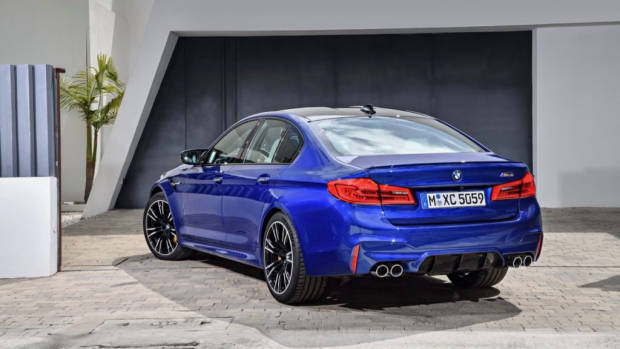
That V8 now produces 441kW of power between 5,600–6,700rpm, and 750Nm of torque in a huge, flat plain of 1,700–5,600rpm. The aforementioned 0-100km/h sprint of 3.4 seconds leads to a 0-200 time of 11.1 seconds, before hitting a top speed of either 250km/h in limited form, or 305km/h if the unlimited top speed option is ticked. Power is sent to the xDrive system through an eight-speed M Steptronic torque converter automatic. In a significant break from the outgoing F10 M5, the M dual-clutch automatic gearbox has been dropped in favour of a smoother conventional auto that won’t upshift when the rev limiter is hit. We’re told the (adjustable) shift times are ‘incredibly short’ but a millisecond figure has not been named.
As one would expect, engine, gearbox, suspension, steering and exhaust characteristics are all variable through selectable drive modes. At ignition, the M5 starts in Efficient engine mode and Comfort settings for everything else; this can be shifted on the fly. The exhaust, which has adjustable valves, affords a variable soundtrack with a ‘soft’ mode while in full song, the M5 will be reassuringly antisocial. The electric power steering, meanwhile, was designed to achieve a ‘neutral behaviour even at the dynamic limits’ while providing ‘clear feedback’ from the road to the driver. In comfort mode, though, it’s stressed that the M5’s steering becomes light and easy to maneouvre.
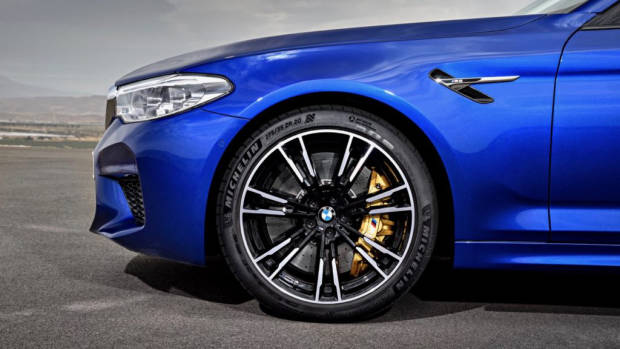
In European specification, the M5 rides as standard on 19-inch wheels finished in ‘Orbit Grey’; the tyres are 275/40 R19 in the front, and wider 285/40 R19 in the back. However, we think it’s likely that the Australian M5 will wear 20-inch rubber as standard, which switches to a double seven-spoke design, while the tyres are 275/35 R20 front, and 285/35 R20 at the rear.
The more aggressive rubber complements the new M5’s focussed design, especially at the front end. The underlying G30 5 Series is already stoutly-proportioned but the near-SUV like scale of the M5’s front apron is functional: M have told media that it’s necessary to provide the V8, transmission, and brakes with adequate cooling for sustained racetrack driving. The track is also wider than the outgoing M5 for a particularly wide stance. The feature colour is ‘Marina Bay Blue’ metallic; the colour palette will also include a variety of matte shades.
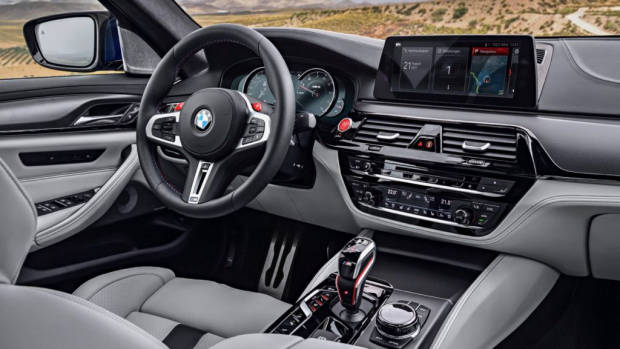
Inside, the M5 is traditionally subtle, with alterations over the standard 5 Series mainly limited to strongly-bolstered sports seats, and a new steering wheel design that includes red highlights for customised M drive mode functions. As standard, the seats are upholstered in merino leather, with electric adjustment that includes pneumatic lateral bolstering; an even more adjustable ‘multifunction’ seat is optional in Europe, and may be standard-fit in Australia.
This reveal of the new M5 is just another step in a long road to the release of the vehicle, though. The car won’t launch into European markets until the southern hemisphere autumn of 2018, meaning an Australian launch isn’t expected for about another 12 months – potentially a bit less. Local pricing hasn’t been announced; while the European starting price of the F90 M5 will be about AUD$180,000 (equivalent), we anticipate the Australian price to be closer to $240,000; we’ll know closer to this vehicle’s launch.
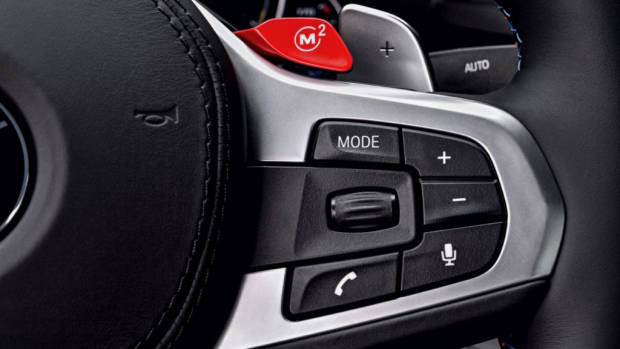
Latest news
About Chasing cars
Chasing Cars reviews are 100% independent.
Because we are powered by Budget Direct Insurance, we don’t receive advertising or sales revenue from car manufacturers.
We’re truly independent – giving you Australia’s best car reviews.